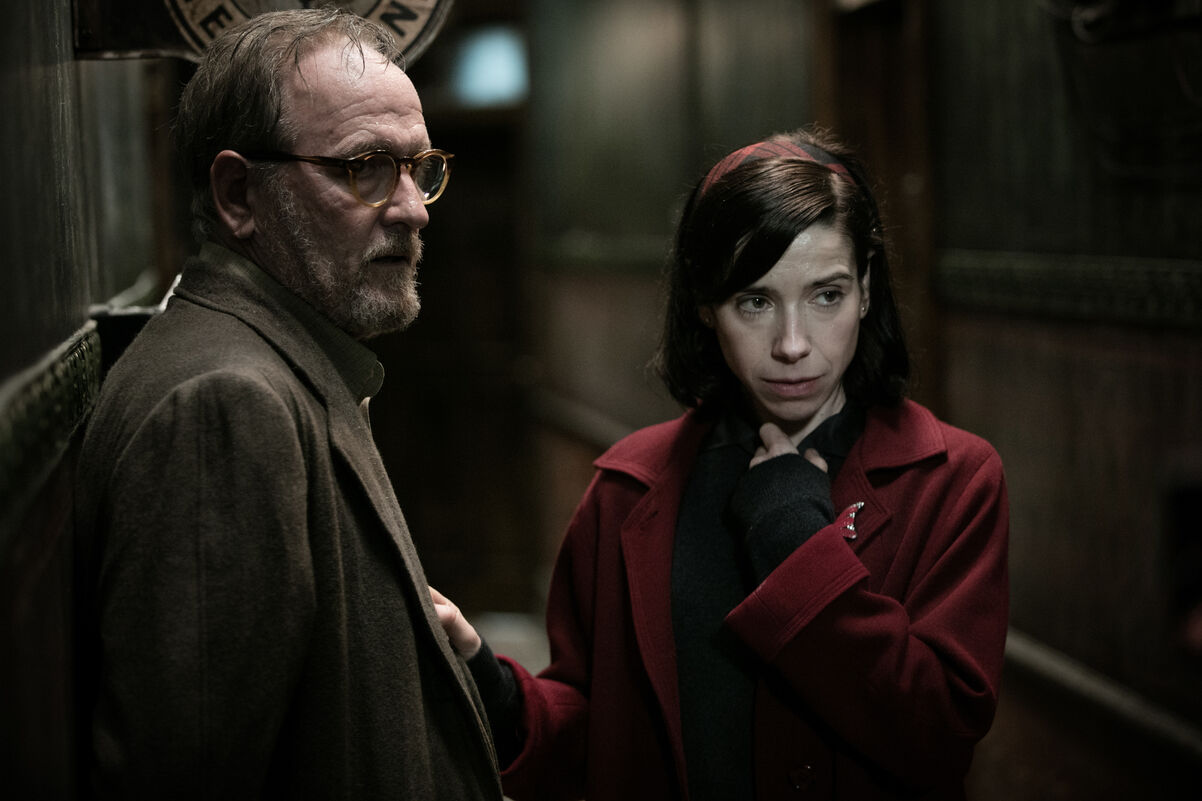In the year of Call Me By Your Name, God’s Own Country and Thelma, the queerest relationship on screen, save the one depicted in French drama BPM, probably belongs to Guillermo del Toro’s The Shape of Water. But there’s plenty of queerness to enjoy aside from its lead couple, Eliza Esposito (Sally Hawkins) and a six-foot-plus tall amphibious biped man (Doug Jones).
If you haven’t seen The Shape of Water, the sci-fi romance from director Guillermo del Toro, there are some pretty big spoilers ahead, so steer clear.
The story’s central love story brings the queerness in droves. Eliza, a woman who can’t speak, and the fish man, known as “the asset,” share an interspecies relationship. Prior to their relationship, they are both relegated to their own worlds: the amphibious man to his water tank and Hawkins to her bathtub, where she masturbates daily while her hard-boiled eggs cook.
But aside from the queer love story at its center, the movie also explores the best friendship between a gay man and a woman in a way few films ever do. Eliza, who cannot speak and signs to communicate, and Giles, who is an older lonely queer bachelor, share a friendship that will ring true to any queer gender-different friendship. The two bond over culture they watch old Hollywood films and discuss divine yesteryear divas.
They are also bonded in their loneliness, an experience that I’ve yet to see translated onto screen very well. Most films that explore the “gay BFF” trope do so through a comedic lens. In The Devil Wears Prada, Anne Hathaway’s Andy has a coded gay best friend who drools over her accessories, along with Stanley Tucci’s Nigel as her queer spirit guide. For a Good Time Call’s Justin Long paints his gay BFF in broad strokes, though he does his best to humanize the material. The “gay BFF” in most films is serviceable, if not fully fleshed out: Daniel Franzese in Mean Girls, Dan Byrd in Easy A, Kieran Culkin in Scott Pilgrim vs. the World and Stanley Tucci (again!) in Burlesque.
But in many of these films, the queer best friend is both defined (negatively!) and otherized by his marginalized identity. But, with Water, Giles’ queerness is what grants him entry into the film’s scope. Though Jenkins’ character is far more explicitly queer than many of the mid-2000s “gay BFFs” listed above, he and Hawkins’ also seem more in tune than many of the best friendships listed above.
Unlike most of these other friendships, Giles and Eliza’s relationship evolves throughout the film. Eliza acts as Giles’ caretaker. Giles rejects Eliza’s plea to help her jailbreak her amphibious lover. Giles helps watch the fish man while Eliza is at work and doesn’t even get mad when the aqua man eats his cat (RIP Pandora.)
That’s not to say that everything is hunky-dorey in the on-screen friendship. The tensest scene in the film doesn’t happen between Eliza and her lover, but between Eliza and Giles. Giles even exhibits some typical misogyny against Eliza when she tells him of her plans to break her lover out of his cage. But the drama between the only serves to deepen the relationship between these two characters. When Giles returns to Eliza ready to help, he does so with his tail between his legs, recognizing he wasn’t there for his best friend.
The film works hard through specific details breakfasts shared, key lime pies eaten, heists attempted to show the beauty that can be friendship between queer men and heterosexual women. And while the movies has a lot to say about romantic love, its beats about platonic love and the selflessness it engenders are hard to overlook.
Photo Credit: Fox Searchlight
Don't forget to share:
Help make sure LGBTQ+ stories are being told...
We can't rely on mainstream media to tell our stories. That's why we don't lock our articles behind a paywall. Will you support our mission with a contribution today?
Cancel anytime · Proudly LGBTQ+ owned and operated
Read More in Culture
The Latest on INTO
Subscribe to get a twice-weekly dose of queer news, updates, and insights from the INTO team.
in Your Inbox













